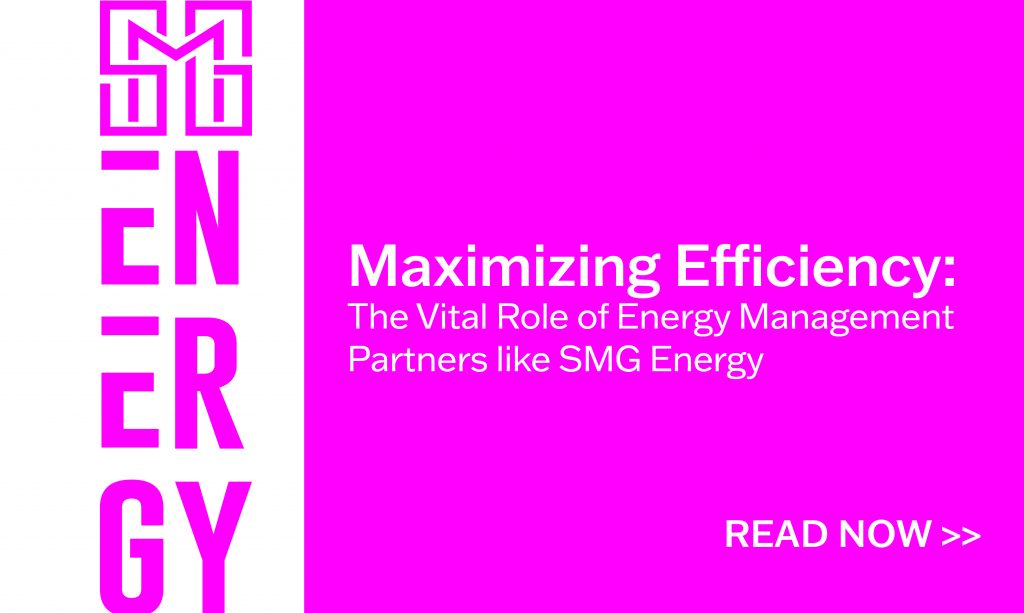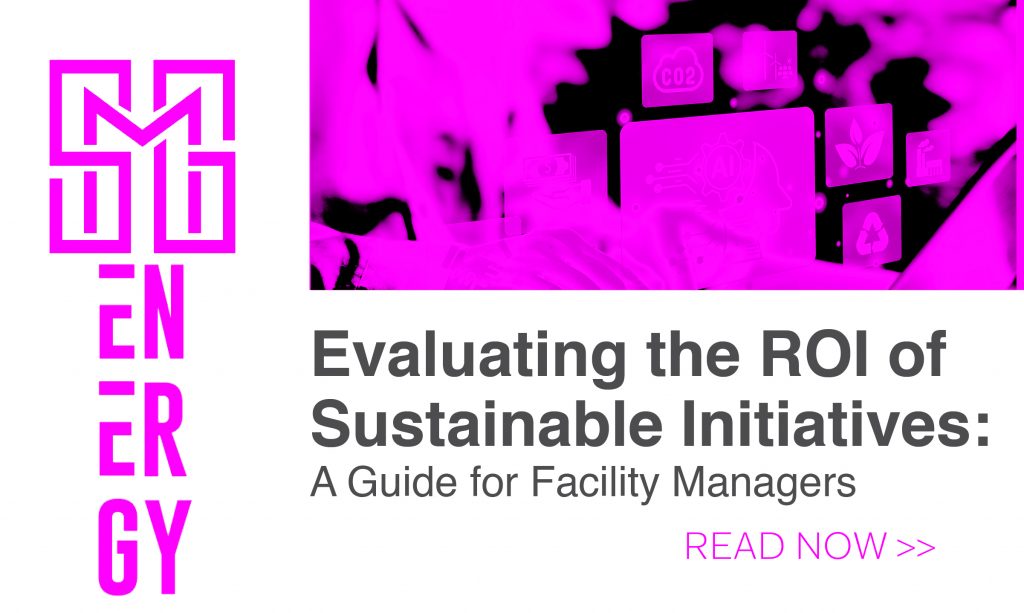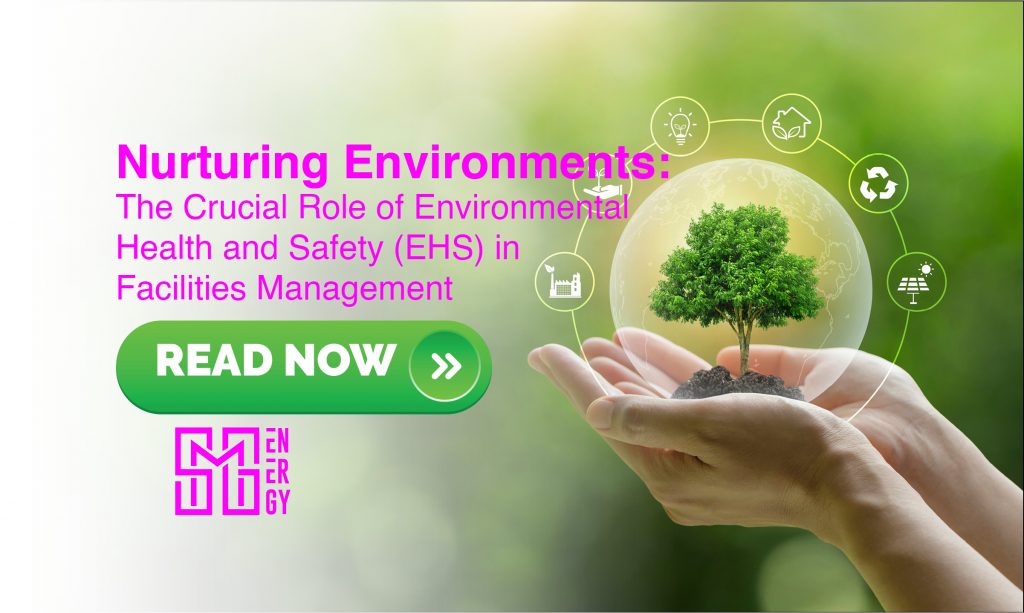One of the great things about energy management is that it’s good for everyone and the planet. For a long time, we took energy for granted. But in the past few decades, the world started to realize that conserving energy helps put less of a drain on the world’s resources, reduces costs, and produces a positive image. In this blog, we will take detailed looks at what energy management is, why it matters, and how facilities managers can input ways to save energy and money.
What is Energy Management?
Energy management is a course of action taken by a company or organization that uses tracking, planning, and optimizing energy consumption to conserve usage within its facilities and infrastructure. It requires being proactive and systematic. It is a crucial part of any facilities management program, helping save money, reduce the carbon footprint, and keep facilities and critical assets running at peak performance. Energy management can take many forms, starting with ensuring people turn off the lights when they leave a room. Other steps include:
- Purchasing new more energy-efficient equipment.
- Maintaining and extending the useful life of current equipment so that it will run at an ideal power-generating level.
- Altering flow rates to find optimal conservation levels.
- Evaluating Utility programs as well as rebates and incentives.
- Utility Bill Management (UBM) centralizing utility data ensuring costs are in-line with usage, etc.
Energy management can be beneficial in both the short-term (quick-fix savings in electricity) and long-term (policies that will keep energy savings at the forefront of procedures for years to come) that better align with a company’s ESG initiatives.
A solid energy efficiency management strategy needs to be in place to help managers and other team members:
- Identify and prioritize energy-related issues.
- Align ESG strategies and more specifically the “E” or environmental and corporate objectives that drive carbon reductions, etc.
- Develop “green” strategies for implementing improvements.
- Create a plan for monitoring and improving results over time.
How Energy Management Works
While energy management programs can differ from company to company and even from department to department, there is a general four-step process that can lead to a successful result in reaching the conservation goal.
Step 1: Amassing Data and Making it “Actionable”
You first need to know what you are working with to make improvements. That means the collecting and measuring of data and make it “actionable”. With more data usually comes more understanding. In the past, one could look at things like monthly bills or weekly readings and find energy-use patterns that could lead to limited ways to conserve. But sometimes, those numbers cannot easily or accurately show where the energy concerns are coming from and where they can be altered for savings. They lack features such as time, area, and type of energy. Manual meter checks are another option to identify day-by-day patterns, but this method can be time-consuming and often prone to human error.
Advanced or “smart” technology makes a larger pool of data more accessible to provide a more accurate picture. For instance, automatic uploads from smart meters can report almost instantly. This information can be viewed and processed using a dedicated software platform.
Step 2: Determining Best Possibilities
Once you have the raw data, the next crucial step is to find a way to digest all of that information to form a knowledgeable opinion on how to go about making sensible and effective energy efficiency management decisions. You can discern what is behind the raw data with the right analytics and graphs. Some examples: They can tell you in a flash when machines are using more energy and might need a maintenance check or when you are overusing lighting during certain situations.
Some energy management software solutions can assist in turning vast amounts of real-time data into recognizable trends by breaking down data into robust metrics while also assessing a particular performance against various daily, weekly, monthly, and even yearly benchmarks.
Step 3: Implementing Practices
Now that the information has been compiled and analyzed to find the best approach, it’s time to put it into action. Energy management solutions usually need cooperation, whether they are one-off adjustments or much more complex and broader fixes. They can often require a need for persuasion to build support. Having concise and convincing numbers of potential savings is often the difference between getting everyone on board to solve it and fighting an uphill battle indefinitely.
Step 4: Tracking Progress and Devising Future Improvements
Putting it all into action could seem like the end, but that is far from reality. Facilities managers must track the progress to determine if those actions are working and verify that there are energy savings. Tracking can identify whether the energy management changes are working and how well. One method may need to be tweaked or rethought to reach a satisfactory result or find a way to improve it. New facilities, machines, and technology investments usually bring more efficiency to the company. That means tracking can also show how new products have further stretched energy management savings. Regular performance reports and up-to-date alerts are vital to ensuring that the savings processes created continue to bear fruit.
Why Does Energy Management Matter?
If you put the importance or worth of energy management into electricity terms, it is a surge that stimulates many outlets in this world. Here are five ways energy management can make a difference:
- It can help a company save money by cutting consumption and lowering energy bills.
- It can benefit the planet by reducing greenhouse gas emissions.
- It can allow a company to prepare more accurate budgets and better understand its operational costs.
- It can prepare a company more for any volatile supply chain industry changes. By reducing energy input, a company will be better able to withstand wild cost swings when outside factors affect energy prices.
- It can better align with corporate ESG goals and help provide a positive image that customers and investors can appreciate and want to be a part of.
How Can I Manage Energy for My Facility?
According to the Alliance to Save Energy, buildings account for about 40% of all U.S. energy consumption and a similar proportion of greenhouse gas emissions. So any way to save energy in facilities can make a significant difference. Therefore, facility leaders must make energy efficiency management a top priority. Let’s go over some ways that they can manage energy:
Reduce after-hours electricity use.
Facilities managers can find out a good deal by tracking how people use buildings after work hours to show where certain areas can become more energy efficient. Policies like turning off lights on floors that are not used after a particular time or shutting off the vending machine lights when that area is not in use can be little changes that significantly impact energy use over time. A rethink on the heating and cooling strategy to correspond better with when the building is in use can bring greater savings. An comprehensive EMS or energy management system, can help make equipment more energy efficient. These cloud-based software platforms for energy management and building automation can help machines reach peak efficiency without miniziming comfort for team members and clients.
Create a planned preventive maintenance strategy.
Consistent preventive maintenance on devices such as HVAC units, air handlers, and windows can also assist in identifying energy leakages. Regular checks can provide insight into when repairs are needed to keep them functioning efficiently or when they need replacement.
Designate specific standard energy procedures.
Make sure everyone from all levels is on the same page with establishing energy-saving procedures and internal regulations that must be adhered to. These rules can reduce or even eliminate such things as space heaters and coolers.
Increase visibility with CMMS reporting.
A CMMS solution can track equipment maintenance, contracts, and planned preventive care that can help show how much of an impact energy-saving measures can make. Facility managers can use the collected data to help understand where they can make further energy improvements in the building.
Make IoT-enabled remote monitoring a part of your action plan.
Facilities managers must also audit equipment settings regularly to ensure equipment is not overworked. Auditing set points daily through a remote monitoring platform provides the ability to automatically reset a piece of equipment to its ideal energy-saving capacity.
How Do You Create a Solid Energy Management Strategy?
In addition to combining all of the above ways to make energy-saving changes, a facilities manager needs to have a strategy that assures everyone is on board for everything from immediate alterations to future, long-term plans. The following are strategy tips that facility management executives can use to increase efficiency while overcoming potentially costly challenges:
- Stay on top by using real-time monitoring and data. Real-time data can identify and alert building operators of potential issues instantly. They can then take corrective actions quickly to prevent shutdowns.
- Manage what is measurable while making sure it is understandable: Advanced metering and EMS capture real-time data, but making sure all that information is understandable requires processing software. Not only does that software make it easier to discern where fixes are needed, but it can create something like an energy dashboard that can engage others and easily show how the changes can make a significant impact.
- Cement support from senior leadership and other stakeholders. Actual changes can only be completed with direct involvement and support from leadership and other stake holders (ex. Procurement, energy managers, sustainability managers, etc.) . Those who make key decisions impacting facility operations’ financial side should be engaged in what energy changes are being made.
- Keep a close eye on managing peak consumption. Shifting or limiting usage during peak hours can help reduce electricity costs. Utilities often use older, less-efficient generation plants to keep up with demand during peak periods. If they don’t have to use those “peaker plants” regularly, there is not such a strain on the system, which could cause shutdowns.
- Remember to consider all types of savings: It’s crucial to review and monitor the whole energy management process. With an energy strategy, it is not just about the fixes that can help with energy savings now; it’s also about planning a path of many steps that will help create and sustain future energy savings. Steps like renewable energy are a perfect example.
- Keep energy in mind when negotiating deals. When negotiating supply contracts, lobby for energy costs to be considered. It’s also important to work on identifying opportunities to help all parties save energy and money.
- Risk-taking can prove fruitful. If properly managed, significant changes can drastically reduce consumption and make the reward worth the risk. It takes a strong commitment and assistance from others to help make it happen.
- Don’t get too caught up in numbers; remember to take action. Energy studies and audits can be helpful, but be familiar with your numbers and take action sooner rather than later. Saving energy only happens when the wheels of action are in motion.
- Find partners with additional in-house knowledge. Relationships and partners are excellent ways to help build an effective energy management strategy. You can link up with other facility management and energy management leaders, energy services companies (ESCOs), and other industry subject matter experts to glean from their knowledge.
- Keep others aware. Once facility leaders leverage technology to identify areas of potential energy conservation and implement an action plan, it’s still important to communicate those changes to everyone in the company. Empowering them with knowledge and resources will help ensure everyone takes an active role in driving energy savings.
Let SMG Energy Help Clean Your Plate
Facilities managers can have quite a lot on their plates regarding energy management. The good news is that SMG Energy, a sustainability transformation sector leader, is hungry to provide help. SMG Energy can help companies transform their ESG frameworks at speed and to scale. With outstanding technical expertise, SMG can help address digital and financial challenges and create an initiative that works on a global scale. SMG’s unique cloud-based solutions can look at your organization’s energy and facility patterns and help you find a better, more efficient path to using energy. If you want to join us at the table, you can pull a chair up at our website and get a free energy assessment.





